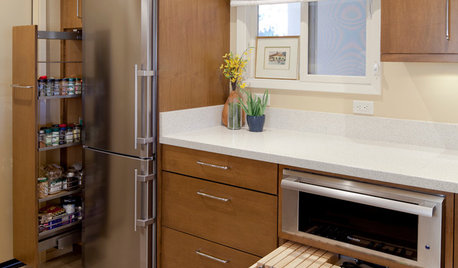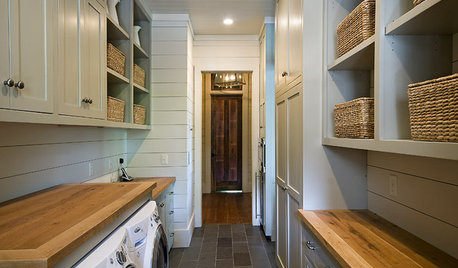If anyone's not totally sick of talking about pie crust
jessicavanderhoff
14 years ago
Related Stories

LIFE10 Feel-Better Things to Do on a Sick Day at Home
Nourish, pamper and heal yourself when a cold keeps you housebound, with these restorative ideas
Full Story
COFFEE WITH AN ARCHITECTDesign Explained in Pie Charts
If you've ever wondered about the creative process of architects and designers, check out these simple charts
Full Story
KITCHEN DESIGNHouzz Call: Tell Us About Your First Kitchen
Great or godforsaken? Ragtag or refined? We want to hear about your younger self’s cooking space
Full Story
FURNITUREHow to Buy a Quality Sofa That Will Last
Learn about foam versus feathers, seat depth, springs, fabric and more for a couch that will work for years to come
Full Story
ORGANIZINGYour Total Home Organizing and Decluttering Guide
Take it slow or be a speed demon — this room-by-room approach to organizing and storage will get your home in shape no matter how you roll
Full Story
HOUZZ TOURSHouzz Tour: Stunning Rooftop Deck Tops a Totally Remodeled Home
An overhaul of this Berkeley home includes new landscaping, a sunny home office, 2 bedrooms and a rooftop entertainment space
Full Story
LIFE3 Ways to Get Unstuck — About Organizing, Decorating, Whatever
Break out of the do-nothing rut to accomplish your goals, whether at home or in other parts of your life
Full Story
MATERIALSInsulation Basics: What to Know About Spray Foam
Learn what exactly spray foam is, the pros and cons of using it and why you shouldn’t mess around with installation
Full Story
FUN HOUZZGuessing Game: What Might Our Living Rooms Say About Us?
Take a shot on your own or go straight to just-for-fun speculations about whose homes these could be
Full Story
PETSSo You're Thinking About Getting a Dog
Prepare yourself for the realities of training, cost and the impact that lovable pooch might have on your house
Full StorySponsored
Custom Craftsmanship & Construction Solutions in Franklin County




ruthanna_gw
readinglady
Related Discussions
Talk About Clearance! How About 100% Off at Lowe's?
Q
Pie Crust - What am I doing wrong?
Q
For Those Of You Who Make Homemade Pie Crusts
Q
Anyone else sick and tired of remodeling???
Q
claire_de_luna
marys1000
trudy_gw
kathya
lindac
jessicavanderhoffOriginal Author
annie1992
carol_in_california
trudy_gw
annie1992
colleenoz
readinglady
ritaotay
annie1992
jessicavanderhoffOriginal Author
claire_de_luna
sheesh
sheshebop
jessicavanderhoffOriginal Author
annie1992
colleenoz
readinglady
trudy_gw
annie1992
claire_de_luna
sheshebop
jessicavanderhoffOriginal Author
annie1992
claire_de_luna
busylizzy
readinglady
jessicavanderhoffOriginal Author
lindac
rob333 (zone 7b)
empress
empress
claire_de_luna
jessicavanderhoffOriginal Author
annie1992
sheshebop
empress
annie1992
marys1000
busylizzy
readinglady
dirtgirl07
jessicavanderhoffOriginal Author
dirtgirl07